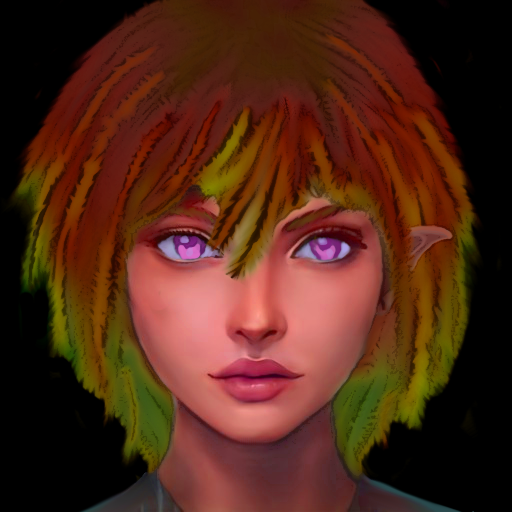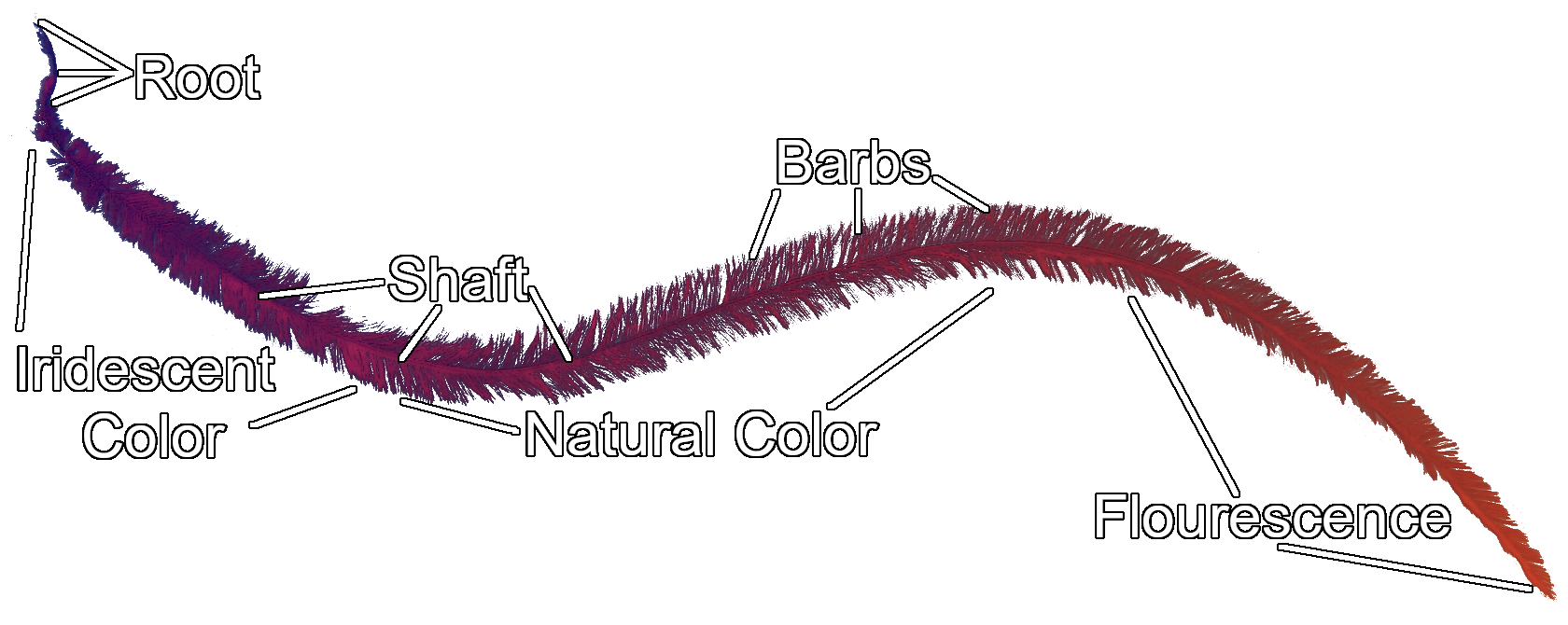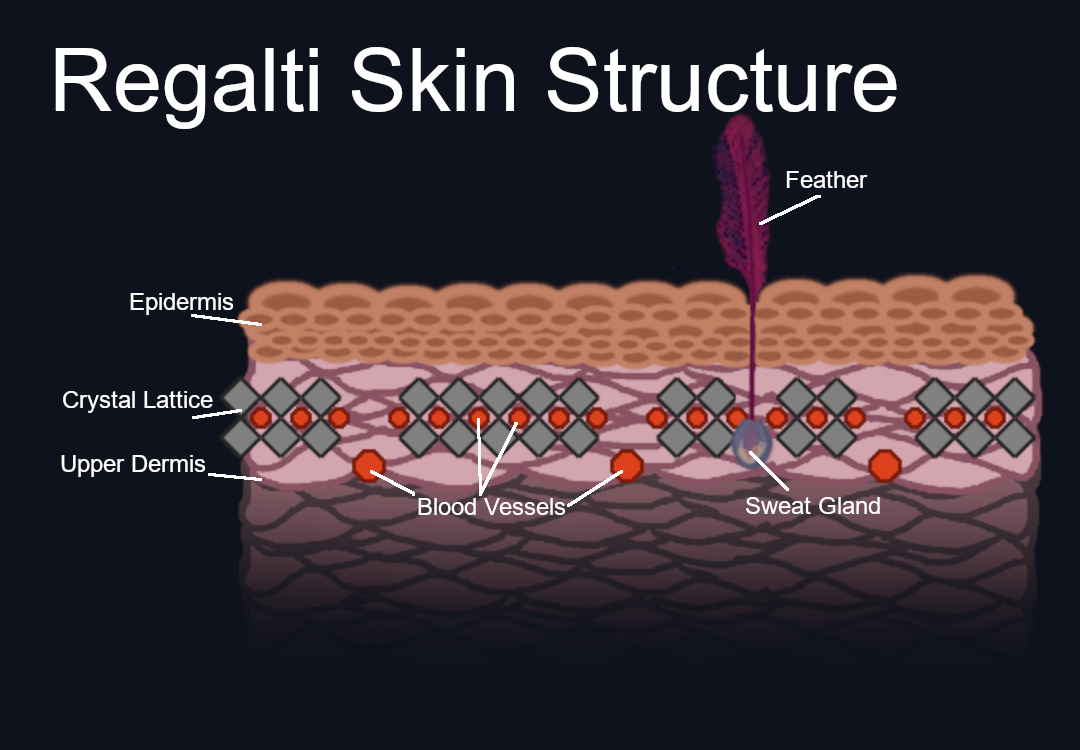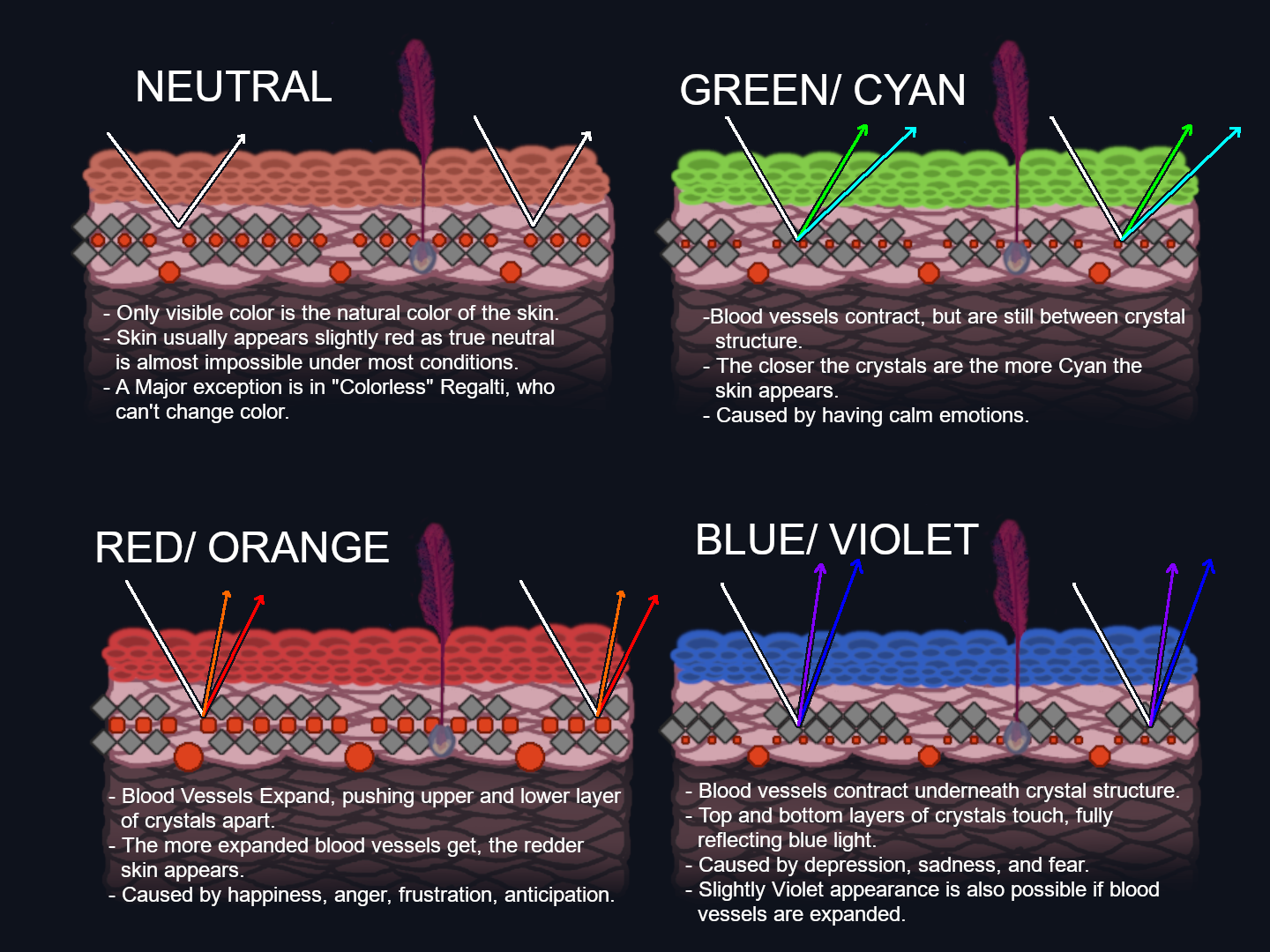Hearing
Regalti have excellent hearing, and have a hearing range of 50Hz-58KHz. before Regalti evolved and they were tiny aboreal creatures, they mainly hunted even smaller rodents and birds, and the ability to hear the ultrasonic sounds these creatures made aided their success. Regalti hearing does get slightly worse starting at adolescense though, and by adulthood, they can only hear from 55Hz-31KHz, which prevents them from hearing many sounds their former prey makes.
Touch
Regalti have an extremely sensitive sense of touch on the tips of their fingers, their lips, and on the ends of their tails. They can detect difference in surfaces only a few molecules thick. Despite the excellent vision capability of this species, they tend to rely on touch just as much in many situations
Smell
Regalti don't have the most sensitive sense of smell on their planet, not even close, but being a sentient species, the grace of having a large brain means they have room for developed olifactory senses and processing, which means that they can easily distinguish hundreds of thousands of differents scents from each other, and are able to more easily pick up the scent of plants, especially those with fruits, much more easily than nearly any other animal on their planet.
Taste
Regalti have five basic tastes, which in English are sweet, sour, salty, bitter, and umami (savory). Different parts of their tounges feel flavor in different ways. Many Regalti have a particular fondness for certain sweet and sour tastes, which can sometimes send them into a state of lightheaded euphoria. Other Regalti though, never experience this.
Vision
This image is a representation of how Regalti see color. They can see wavelengths that are anywhere from 275 to 725nm, but on average can see 300nm to 700nm. This allows them to see into the UV spectrum of light. Biologically speaking, Regalti have 4 pigment cones in their eyes. A Red cone centered at 560nm, a Yellow cone centered at 545nm, a Cyan cone centered at 475nm, and a Violet cone centered at 380nm. They also have rod cells that are centered at 500nm. The violet cone is sensitive to ultraviolet light down to 300nm, which is when Regalti see something reflecting or absorbing a lot of UV light, it appears slightly purple.
The red, yellow, and violet cones are close to a comparable Vusinor or Human's red, green, and blue cones, but as they are positioned differently, this causes all three races to percieve colors much differently from each other. To humans for example, yellow and green are the brightest colors. To a Regalti, Cyan and Far-Violet are the brightest colors. Far-violet sits just outside the spectrum of human vision, and appears black to them.
About the color of Regalti eyes, the iris is actually pigmented light brown, but the structure of the iris will scatter certain wavelengths of light, making them appear green and blue, similar to how the colors of their feathers change. Additional scattering can make some Regalti eyes more violet, even glow under uv light. The cornea appears slightly blue or violet to most Regalti, but to anyone else, appears white instead.









Super cool. Can't wait to see what your species looks like. I really like all of the details within the appearance like the color ranges. It's also an interesting and unique concept for a space-faring species. Great work here!